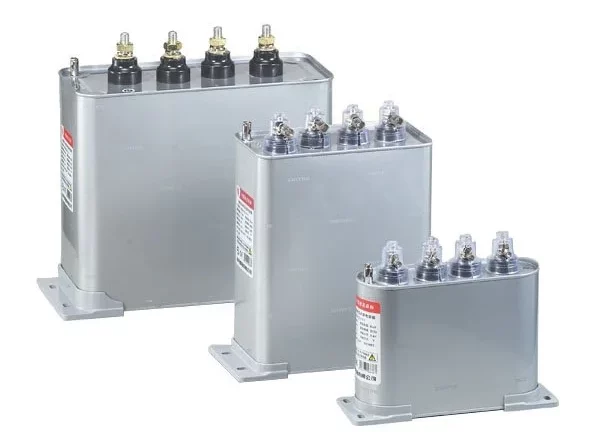The primary use of capacitors in power systems is to improve the power factor of an electrical installation or an individual piece of electrically operated equipment. Capacitors store electrical charge and maintain a voltage that is present at its terminals even when a capacitor is disconnected from a circuit. Capacitors must be enclosed, guarded or protected, or located such that people cannot accidentally get contact with the capacitor terminals.
In most installations, capacitors are installed out of reach or are placed in an enclosure accessible only to qualified persons. The stored charge of a capacitor must be drained by a discharge circuit either permanently connected to the capacitor or automatically connected when the line voltage of the capacitor circuit is switched off. The windings of a motor or a circuit consisting of resistors and reactors canbe used serve to drain the capacitor charge.
Conductor Size
Capacitor circuit conductors must have an ampacity of not less than 135% (PEC Article 4.60.1.8.a) of the rated current of the capacitor. This current is determined from the kVA rating of the capacitor as for any load.
A 50 kVAr three-phase capacitor operating at 480 volts has a rated current of:


The minimum conductor ampacity is then:


A 14 mm2 THHN conductor can be used for this purpose.
Electrical Protective Device
When a capacitor is switched into a circuit, a large inrush of current results to charge the capacitor to the circuit voltage. Therefore, an overcurrent protective device for the capacitor must be rated or set high enough to allow the capacitor to charge. Although the exact setting is not specified in the PEC, typical settings vary between 150% and 250% of the rated capacitor current.
Assuming a circuit breaker will be used as the electrical protective device, the minimum rating will be.


The minimum rating of circuit breaker will be 100A.
Motor - Capacitor Combination
In addition to overcurrent protection, a capacitor must have a disconnecting means rated at not less than 135% of the rated current of the capacitor unless the capacitor is connected to the load side of a motor-running overcurrent device. In this case, the motor disconnecting means would serve to disconnect the capacitor and the motor.
A capacitor connected to a motor circuit serves to increase the power factor and reduce the total kVA required by the motor-capacitor circuit. The power factor is defined as the true power in kilowatts divided by the total kVA, or:

where the power factor is a number between 0.0 and 1.0. A power factor less than 1.0 represents a lagging current for motors and inductive devices. The capacitor introduces a leading current that reduces the total kVA and raises the power factor to a value closer to unity. If the inductive load of a motor is completely balanced by the capacitor, a maximum power factor of unity results and all of the input energy serves to perform useful work.
The capacitor circuit conductors for a power factor correction capacitor must have an ampacity of not less than 135% of the rated current of the capacitor. In addition, the ampacity must not be less than one-third the ampacity of the motor circuit conductors.
The connection of a capacitor reduces current in the feeder up to the point of connection. If the capacitor is connected on the load side of the motor running overcurrent device, the current through this device is reduced and its rating must be based on the actual current, not on the full load current.
